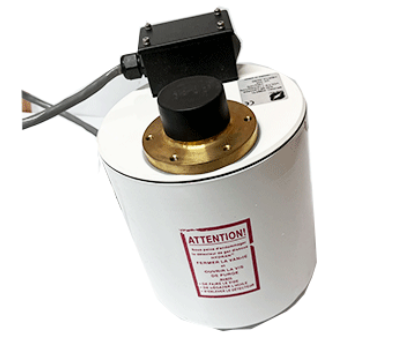Three trends affecting the oil and gas industry in 2023
The past year has been a banner one for the oil and gas industry, with oil prices rising to a decade high. Investing News recently released a list of things to keep an eye out for in the year ahead.
The combination of recovering demand after the pandemic lockdowns and supply disruptions caused by sanctions pushed WTI and Brent to $120 per barrel in the first half of 2022. Crude oil prices began to decline in the second half of the year, and the prices of both crude oil will remain at the level of the beginning of the year.
At the same time, gas supplies in Europe face obstacles as geopolitical conflicts inject uncertainty into global markets and economies. As of August, the price of the fuel used to heat homes had reached a 14-year high of $9.71 per million British thermal units.
Matthew Cunningham, a member of the FocusEconomics group, said: "Much of the volatility in oil prices this year has been caused by geopolitical conflicts - oil prices surged by around 30% by early March - and later sanctions announced by Western countries and their Allies. Since a war involving NATO is unlikely to escalate significantly, and most major sanctions have already been announced, a war is unlikely to cause prices to spike or plummet as much as they did in 2022.
Against the backdrop of high inflation and rising interest rates, the global economic outlook has deteriorated and energy prices are lower. Crude oil prices fell below $90 a barrel in November and have stayed there ever since.
"This is basically the low point for 2022," said Fulp geologist Mitch Fulp. "A lot of that has to do with the fact that the global blockade has reduced demand, and high oil prices have also reduced demand in the U.S."
Bruce Kasman, head of economic and policy research at jpmorgan, wrote: "The global growth outlook remains subdued as winter will exacerbate pandemic problems and the gas crisis in Europe, but we do not think the global economy will fall into recession in early 2023." The weakening of supply chain and commodity price shocks is easing the drag from financial conditions."

Notably, high inflation and tight monetary policies in 2022 have almost halved global GDP growth, from 6% in 2021 to 3.2%. That figure is expected to shrink to 2.7 percent by 2023. The weakest period of growth since 2001.
Oil and gas supply problems will persist
The world has been counting on the Organization of the Petroleum Exporting Countries (Opec) to boost crude production.
Opec production fell by 310,000 barrels a day in November. The 11th month of the year also saw Opec fail to meet its expected quota of 1.81 million barrels per day. On the other hand, a surge in liquefied natural gas imports into Europe pushed the price of the heating fuel down to $5.28, the lowest since March.
For oil, supply remains a problem. Not only do countries need to ensure a steady supply of oil to keep their economies running, but countries like the U.S. also need to replenish strategic oil reserves that were drawn down earlier this year.
In 2022, the United States released 180 million barrels of crude oil from the Strategic Petroleum Reserve, earning $4 billion. The U.S. Strategic Petroleum Reserve now stands at 378.62 million barrels, down from 598.92 million barrels a year ago.
"They didn't fund any oil and gas companies, so companies couldn't raise money and production was flat," Fulp said. "Production in the U.S. has basically been flat for a year and a half since we recovered from the epidemic and has not gone up."
According to Fulp geologists, if the United States can find more efficient means of international transportation, it has an opportunity to obtain LNG.
Oil and gas companies are expected to do well
Although institutional investors have turned away from oil and gas, the oil and gas industry still made huge profits in 2022. This year's strong performance has led Fitch Ratings to give the oil and gas industry a stable outlook.
"The performance of the oil and gas industry in 2023 will be broadly in line with 2022 and significantly stronger than mid-cycle," the report said. "We expect average oil and gas prices to moderate next year, especially due to the economic slowdown, but hydrocarbon markets will remain tight as oil and gas supplies are reduced due to the capacity powers and the cautious stance of Opec +."

The oil and gas industry regulator expects 75% of oil and gas companies to be free cash flow positive after dividends.
Senior Director Dmitry Marinchenko said in a report: "Despite the introduction of windfall profits taxes in some countries, global oil and gas companies will continue to post high earnings. Inflation will have an impact, but most oil and gas companies have reduced costs significantly during the period of low oil prices, which will help their cash flow."
Moody's is optimistic about the year ahead, believing that growing demand in Asia will act as a catalyst for prices.
According to Fitch, if Opec + remains cautious, spare capacity could be affected, adding a positive factor to prices. But a larger, longer-term energy transition could lead to slower demand and weaker prices.
- EMERSON
- Honeywell
- CTI
- Rolls-Royce
- General Electric
- Woodward
- Yaskawa
- xYCOM
- Motorola
- Siemens
- Rockwell
- ABB
- B&R
- HIMA
- Construction site
- electricity
- Automobile market
- PLC
- DCS
- Motor drivers
- VSD
- Implications
- cement
- CO2
- CEM
- methane
- Artificial intelligence
- Titanic
- Solar energy
- Hydrogen fuel cell
- Hydrogen and fuel cells
- Hydrogen and oxygen fuel cells
- tyre
- Chemical fiber
- dynamo
- corpuscle
- Pulp and paper
- printing
- fossil
- FANUC
- Food and beverage
- Life science
- Sewage treatment
- Personal care
- electricity
- boats
- infrastructure
- Automobile industry
- metallurgy
- Nuclear power generation
- Geothermal power generation
- Water and wastewater
- Infrastructure construction
- Mine hazard
- steel
- papermaking
- Natural gas industry
- Infrastructure construction
- Power and energy
- Rubber and plastic
- Renewable energy
- pharmacy
- mining
- Plastic industry
- Schneider
- Kongsberg
- NI
- Wind energy
- International petroleum
- International new energy network
- gas
- WATLOW
- ProSoft
- SEW
- wind
- ADVANCED
- Reliance
- YOKOGAWA
- TRICONEX
- FOXBORO
- METSO
- MAN
- Advantest
- ADVANCED
- ALSTOM
- Control Wave
- AB
- AMAT
- STUDER
- KONGSBERG
- MOTOROLA
- DANAHER MOTION
- Bently
- Galil
- EATON
- MOLEX
- Triconex
- DEIF
- B&W
- ZYGO
- Aerotech
- DANFOSS
- KOLLMORGEN
- Beijer
- Endress+Hauser
- MOOG


Email:wang@kongjiangauto.com
























































































